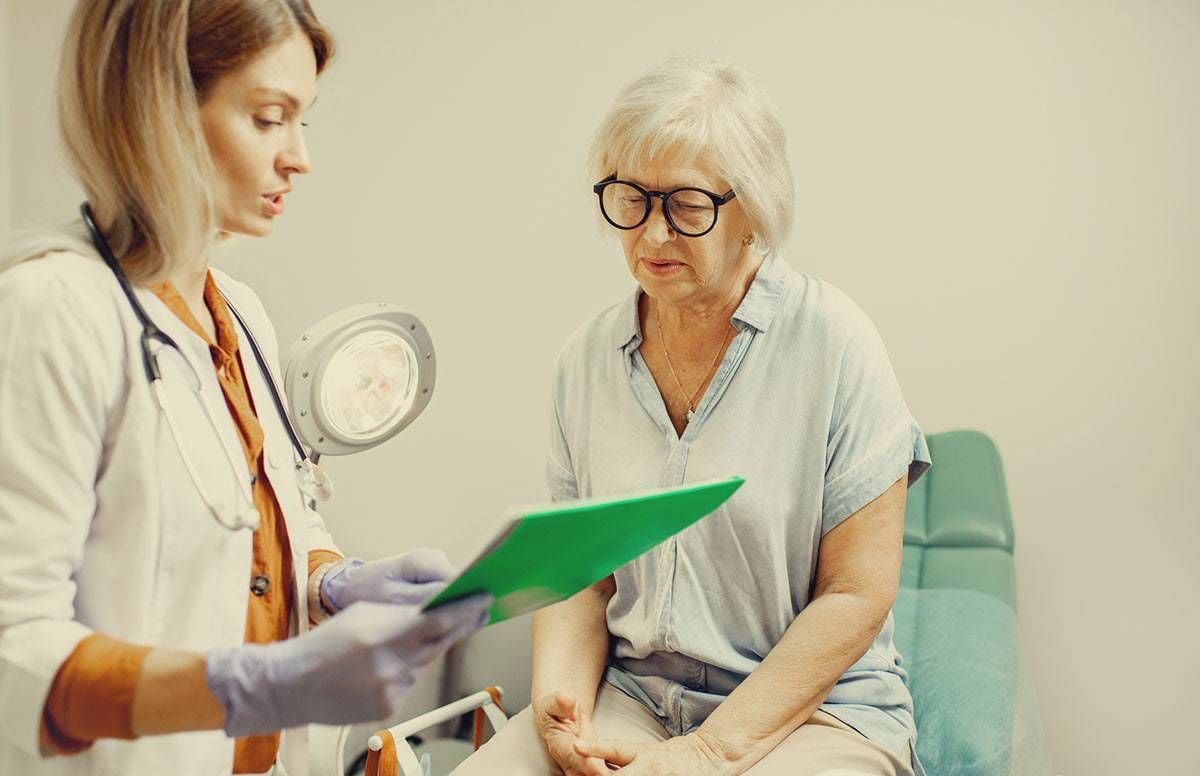Could Your Symptoms Point to a Pelvic Floor Disorder?
Experts explain the conditions, symptoms, causes and treatments
Good muscle tone is important to health in many ways. But most people don't realize that it's also important to maintain, treat and improve muscle tone in the pelvis.

The pelvis works sort of like a sling to support all the pelvic organs, holding them in place and providing support. As our muscle tone ages, or if it’s damaged or becomes weak, it can lead to pelvic floor disorders that impact bladder and bowel functioning.
This kind of problem impacts 27% of women ages 40 to 59, 37% of women 60 to 79 and nearly half of women over 80, according to the University of Chicago Medicine Center for Pelvic Health. Men suffer from pelvic floor disorders at a much lower rate, experts say. It’s not as easy to determine the rate because male pelvic floor disorders — including erectile dysfunction, inflammation of the prostate and urinary dysfunction — are usually not reported in medical records as pelvic floor disorders.
Problems Caused by Pelvic Floor Disorders

You might not have heard the term pelvic floor disorder, but you're most likely familiar with the conditions it can cause. These include urinary incontinence (leaking), urinary frequency, constipation, fecal incontinence, pelvic organ prolapse, constipation, pelvic pain, pelvic muscle spasms or bulging in the vagina or rectum.
"Pelvic floor disorders are very common and predominantly affect older women," says Dr. Marian Acevedo Alvarez, assistant professor of female pelvic medicine and reconstructive surgery at Loyola University Stritch School of Medicine and Hines VA Hospital, both in the Chicago area. She says the most common cause is childbirth, but menopause, surgeries, obesity and heavy lifting are also to blame.
"Thankfully, most of the pelvic floor disorders are not dangerous or life-threatening,” Alvarez says. “Your doctor will tailor the treatment to how bothered you are by your symptoms. The first-line treatments have low r

isk and a favorable side-effect profile — these are lifestyle modifications and pelvic floor physical therapy."
Urinary Problems
A pelvic floor disorder can dramatically impact the bladder, causing urgency (needing to go NOW!), frequency (having to go a lot), leakage and retention (incomplete emptying of the bladder which can cause urinary tract infections).
"The first go-to treatment for this is pelvic floor physical therapy or Kegel exercises,” says Dr. Rena D. Malik, assistant professor of surgery, director of female pelvic medicine and reconstructive surgery at the University of Maryland School of Medicine in Baltimore. Kegel exercises are exercises in which you tighten then release your pelvic floor muscles. Contrary to what most people think, both women and men can benefit from doing them.
"Thankfully, most of the pelvic floor disorders are not dangerous or life-threatening."
Heather Jeffcoat, a physical therapist at Femina Physical Therapy in Montrose, Calif., explains that pelvic floor therapists provide "a combination of manual therapy (“hands-on”) techniques, corrective exercises for movement and posture, stretching, strengthening, coordination exercises, nervous system education and relaxation techniques."
"Pelvic floor physical therapy can improve incontinence by strengthening weakened muscles and educating women on how to prevent additional weakness over time,” says Sara Reardon, a physical therapist at The Vagina Whisperer clinic in New Orleans.
Research shows that 50% of women are not doing Kegels properly when verbally instructed, so one-on-one treatment and guidance is essential, Reardon says. Studies show 50% to 70% of women can have decreased symptoms of urinary incontinence with pelvic floor physical therapy.
Malik cautions that this therapy "is useful as long as patients continue doing pelvic floor therapy and are doing it correctly. These exercises do need to be done continually to receive long term benefit."
Linda B. (she asked that we use only her first for privacy), 60, from Chattanooga, Tenn., went to pelvic floor therapy for her urinary incontinence for eight weeks, then used a biofeedback device to continue at home.
"That has worked wonders for the most part,” she says. “Before, I needed a (urinary incontinence) pad. Today, I wear a liner just in case, but I feel so much better."
If pelvic floor therapy doesn't work, there are medications and surgeries available, as well as lifestyle changes (diet and fitness) and bladder training (emptying your bladder on a schedule which gradually spaces the frequency out), according to Voices for PFD, a website of the American Urogynecologic Society.
Interstitial Cystitis
Interstitial cystitis (IC) — recurring bladder or pelvic pain, pressure or discomfort — is a separate diagnosis that can encompass all of the bladder symptoms described above. It may also include bladder lesions and spasms and is a chronic condition. Medication, lifestyle changes (diet and stress management) and pelvic floor therapy are the treatments.
"Pelvic floor physical therapy can improve incontinence by strengthening weakened muscles and educating women on how to prevent additional weakness over time."
Jill Osbourne, 59, of Santa Rosa, Calif., is the president and founder of the Interstitial Cystitis Network and an IC patient herself. She suffered for many years and got worse after a hysterectomy, but pelvic floor therapy was a lifesaver.
"After just three appointments, the spasms finally stopped,” she says. “The vast majority of patients that we work with struggle with pelvic floor dysfunction and physical therapy is remarkably effective at reducing their pelvic pain and urinary symptoms. This is particularly true of men with pelvic pain as well. It has revolutionized the care of IC patients who, for decades, were told incorrectly that this was an incurable bladder disease, when, for many, it is actually the result of pelvic floor muscle trauma and/or dysfunction."
Bowel Problems
A pelvic floor disorder can lead to fecal incontinence, leakage and flatulence, as well as constipation. "The first line treatment is increasing your fiber intake (either naturally or with a supplement) and using a medication like Imodium,” Malik says.
Alvarez points out that other options include biofeedback treatment with a device (approved by the Food and Drug Administration) called Attain; pelvic floor therapy; prescription meds and surgery.
Pelvic Organ Prolapse
"Pelvic organ prolapse [POP, commonly referred as dropped uterus, bladder or rectum]," Alvarez says, "occurs when the normal pelvic support weakens and the pelvic organs drop.” To help explain the condition, she says think of water damage to the support beams of a roof or building.
“As the beams weaken, they will bulge downward and they will bring with it any structures that are right above the beams, such as bath tubs, toilets, faucets, etc. The same thing happens with POP. The normal support that holds the structures in place weakens with time … and the structures that they are holding in place, such as the uterus, bladder and rectum, will also start to come down," notes Alvarez. This can result in bulging in the vagina or rectum.
POP symptoms include a feeling of pressure in the pelvic floor area, lower back ache, painful intercourse and urinary problems. It is diagnosed through bladder function and pelvic floor strength tests, magnetic resonance imaging (MRI) and ultrasound imaging.
Alvarez recommends that people experiencing problems that could be caused by a pelvic floor disorder see a doctor as soon as possible. The wide variety of treatment options available means there is likely a solution that can help.

